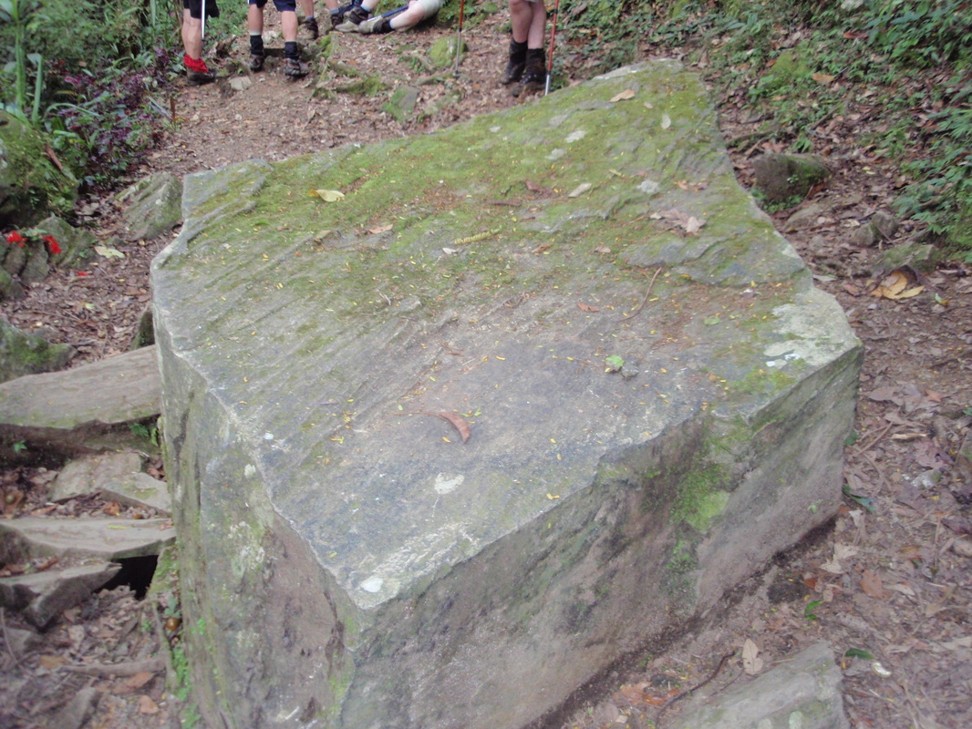
Remembrance Day: the horrors of World War II still scar Papua New Guinea’s Kokoda Trail
- The 96-km route played host to a series of bloody battles fought between the Japanese and Australian forces

With my head down I push on, concentrating on a step at a time because the mud has been made slippery by the early morning rains. After landing yesterday in Kokoda village, on a jungle airstrip, we’ve climbed straight up from the steamy jungle in Papua New Guinea’s far east. There is not much time to rest as our guides and porters press forward, pointing out locations of interest along the route. The caravan comes to a stop at the head of a path leading deep into the rainforest, towards a large, flat, table-like rock surrounded by foliage and smaller stones.
Pink flowers lay on top; local villagers place a fresh bunch here every morning, a show of respect for its horrific history. Sweaty and tired from a tough morning on the Kokoda Trail, I try to calm myself and take in the atmosphere. A sombreness overcomes us all as Chris, our professional guide, explains what occurred on this flat rock in the forest. My eyes well up, lower lip trembles. Standing over Surgeon’s Rock I try to fight back the tears but, like everyone else in the team, I lose the battle.
The heat and humidity are suffocating, and yet a chill runs through my body. It is only the second day of a nine-day trek along the Kokoda Trail – some call it the Kokoda Track – as we film an episode of my Extreme Treks series for BBC Earth, but this journey has already become so much more than just a hike through the jungle.
Surgeon’s Rock, also known as Con’s Rock after Australian orderly Con Vapp, who treated wounded soldiers and is thought to have conducted an amputation on the stone, was a forward medical station during some of the heaviest fighting between Japanese and Australian forces in World War II. During the Kokoda Trail Campaign, injured soldiers would be carried back from the front lines to Surgeon’s Rock for medical procedures before being moved back further, which often meant a journey of 20 or 30 kilometres.

The Japanese, and their more sophisticated weaponry, ensured that Surgeon’s Rock was busy. Standing over it, now surrounded by pink and red flowers, it’s difficult to imagine the horror that enveloped this site towards the end of 1942.
As the Japanese advanced rapidly through Asia they had Australia in their sights, and Papua New Guinea, sitting just off northeastern Australia, was the perfect island from which to launch an invasion. Canberra mobilised to defend Papua New Guinea, then an Australian territory. The series of battles that would become known as the Kokoda Trail Campaign were fought between July and November 1942.
In the hot and humid jungle, the fighting was often close contact and the losses on both sides were dreadful. Soldiers died not only from bullet and shrapnel wounds but also dysentery, malaria and a host of other tropical diseases.
Initially, the Japanese were dominant, forcing their way along the Kokoda Trail, but as they advanced south and got closer to the capital city of Port Moresby, their supply lines became too stretched and Australian reinforcements pushed them back.
Today the trail is popular with Australian adventurers and those interested in the history of war. For me, it offers a chance to explore the remote, isolated and natural beauty of Papua New Guinea, as well as approach a culturally important episode that was relatively unknown to me; as a Canadian, the trials of the Australians in this part of the world were not mentioned in any history book I ever picked up.

A trek along the Kokoda Trail is a journey back in time, a passage through a kaleidoscope of emotions that are challenging to understand and impossible to control. Confronting those emotions while powering through a challenging physical landscape and taking on the whims of Mother Nature is a tall order; many who attempt the 96-km-long Kokoda Trail fail and have to be brought out by helicopter, but of those who complete the journey, a lot do so as changed human beings. The legacy of war – the violent ending of countless, often young lives – is humbling; walking along the same trail that so many of those soldiers used just before they died in agony alters one’s perspective on life.
Urban problems seem irrelevant after you’ve undertaken something as transformative as the Kokoda. In remembering those who fought and experiencing the conditions in which they struggled, our modern existence seems absurdly simple by comparison. Humility is a valuable attribute, but it must be earned. Have you tried to exist outside your comfort zone or confront a dark past? How can we remember the fallen if we are not humble?
Using a muddy, sweaty shirtsleeve to wipe away the tears brought on by Chris’ stories of heroism and suffering at Surgeon’s Rock, I return to the trail and again head south towards Port Moresby, seven days of hard slog still ahead of us. Unwounded and able-bodied I push forward, but the Kokoda Trail is no longer the same. Following the stop at Surgeon’s Rock, the trek has taken on a deeper meaning, each step having a new-found poignancy as I stride across the same mud soldiers once dragged themselves through with the very last of their strength.